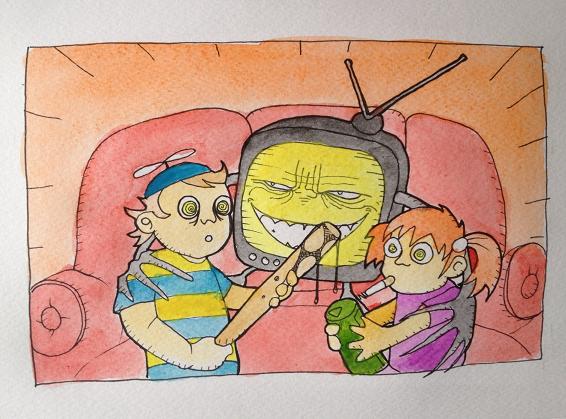[dropcap style=”font-size:100px; color:#992211;”]T[/dropcap]he reason why children are being exposed to less violence and crime may elude the researchers, but it’s nice to have some good news to share.
*Coughs* Flappy Bird *Coughs*
Children’s exposure to violence and crime declined between 2003 and 2011.
Rates of violent crime have declined in the United States since the 1990s. The authors previously completed three national telephone surveys of children and caregivers on children’s exposure to violence in 2003, 2008 and 2011.
The authors examined 50 specific trends in exposures to violence and crime and found 27 significant declines and no significant increases between 2003 and 2011. There were declines in assaults involving weapons or injuries and assaults by peers and siblings. Physical and emotional victimization (bullying) also declined, as did sexual victimization. Researchers also identified declines in exposure to violence and also no increases during the recession years of 2008 to 2011.
[quote]the ease with which one can
recall a violent incident leads to
an overestimation of prevalence[/quote]
Increased use of electronic technology
Researchers speculate about the causes for the declines, including the growing use of psychiatric medication among youth and adults and the increased use of electronic technology so young people have less face-to-face social contact where violence and assaults may occur.
“The overarching epidemiologic picture seems to show substantial drops in violence and abuse exposure during the 1990s, with continuing declines during the 2000s that have not been reversed by the economic adversities of the 2008 recession. These declines have occurred for many kinds of exposure, including assault, bullying, sexual assault, property crime, and witnessing violence.”
In a related editorial, John R. Lutzker, Ph.D., and colleagues at Georgia State University, Atlanta, write:  “Finkelhor and colleagues continue their leadership in providing trend data on maltreatment of children. … The data shared by Finkelhor et al refute the notion that crime and victimization data necessarily rise in economic hard times.”
“Finkelhor and colleagues continue their leadership in providing trend data on maltreatment of children. … The data shared by Finkelhor et al refute the notion that crime and victimization data necessarily rise in economic hard times.”
“Nonetheless, it is important that the media be aware of the findings reported by Finkelhor et al. All too often, incidents of mass violence – such as shootings at schools, theaters or malls – dominate the news (which is understandable) and raise fears among the public. These incidents can also lead the public to believe that violence is on the rise owing to the availability heuristic: the ease with which one can recall a violent incident leads to an overestimation of prevalence. Thus, to inform policy and for the collective national psyche, the public should be informed of the good news about these trends,” they continue.
“Studies such as that reported by Finkelhor et al provide much-needed epidemiologic data but tell us very little about the reasons for the decline in child violence,” the authors note.
Source: The JAMA Network Journals Author: David Finkelhor, Ph.D., of the University of New Hampshire, Durham, and colleagues.
Illustration by Dan Booth not to be reproduced without his express prior permission

Some of the news that we find inspiring, diverting, wrong or so very right.



















